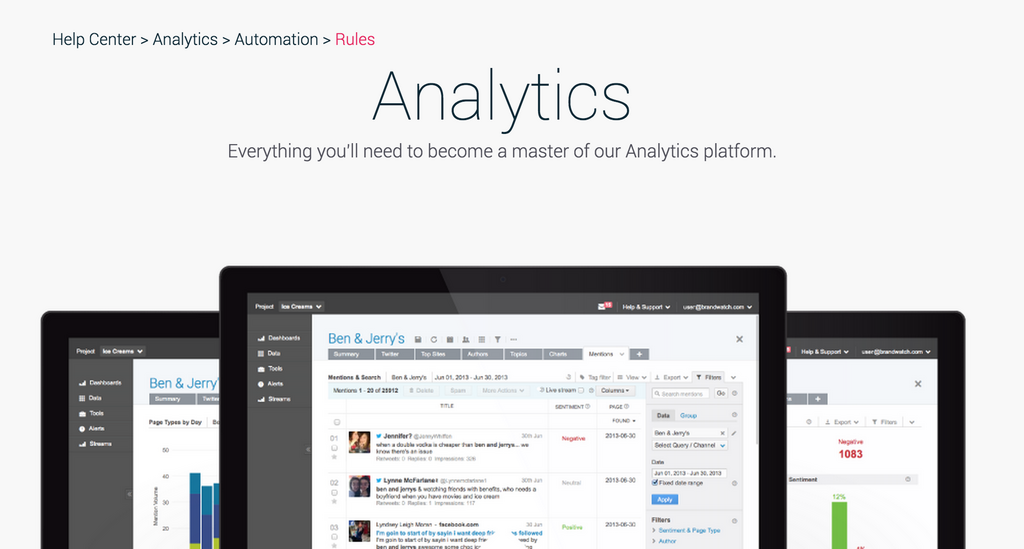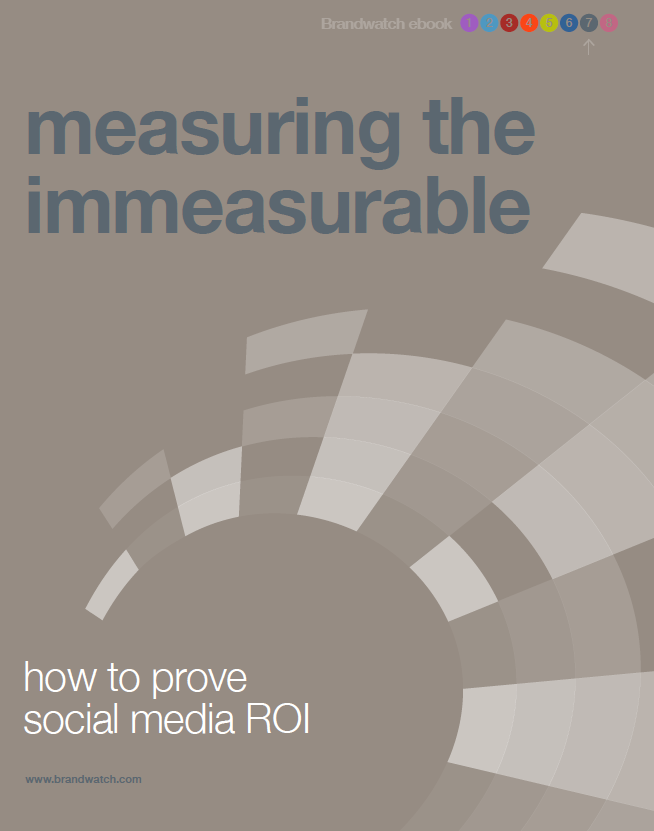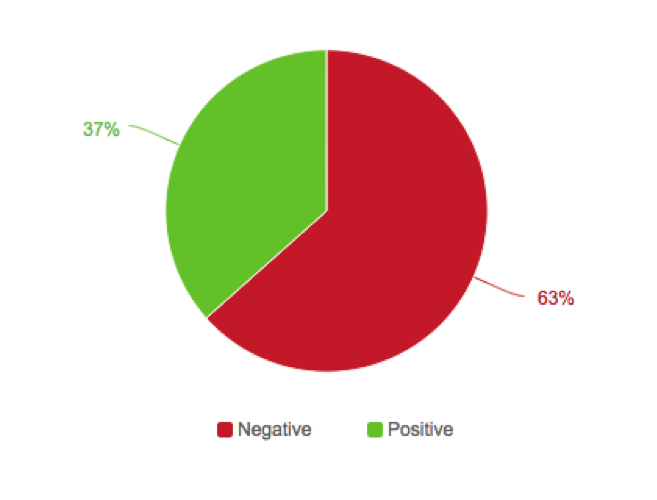10 Social Listening Tools and Who They’re Best for
By BrandwatchJul 14
Join us and boost your social media potential with our data-led event
Published May 4th 2015
No one likes rules. Rules are there to be broken, ignored, moaned at.
But in Brandwatch Analytics, Rules are your best friend. They can take your social analysis to a much richer, deeper level. What’s more, they’re automatic once set up, so you get all that additional richness for a small amount of initial setup.
In case you’re not familiar with them, Rules tell the system to automatically take an action on the data as it comes in to the system, based on criteria set by you through a combination of search strings and filters.
For example, you can ask it to mark mentions containing specific words as belonging to a chosen category, or ask for all mentions by a specific author to be tagged. Here’s our user guide if you need help setting them up.

If you’re not using Rules already, you’re missing out on a whole world of opportunity. Here are some great ways Rules can help you out to give you some inspiration, as well as how to set them up – what are you waiting for?
Here’s what we’re going to cover:
Top Tip: You can also incorporate all of these Rules strings into your actual Queries if you want to only capture these types of conversation and nothing else, rather than categorizing a subset of a wider data set.
Proving the ROI of social is an ongoing theme in the social media industry, but smart social media analysis can help you get there. Using Rules, you can automatically identify the mentions that show true purchase intent – when someone is expressing their intention to buy your product or service.
Then, using categories, you can start to understand the impact of your activities – did the percentage of purchase intent mentions go up when you ran your recent social campaign? Do people in particular countries express intent more often than in other countries – is your social more successful there? How does your percentage of purchase intent compare to your competitors – are you doing a better job of turning people from ‘talking about’ to ‘buying’ than others?

To set up a purchase intent Rule to categorize mentions within your brand Query, use a search string using words that someone would use when talking about their intention to buy something. The exact words will depend on your industry (i.e., in our industry words like ‘test’, ‘trial’ and ‘demo’ are common, whereas in retail it’s more likely to be ‘buy’, ‘get’ or ‘order’, for example).
Here’s an example – this string could be used in a Rule to automatically categorize mentions picked up by a Query about a fast food brand that show those intending to buy their food:
((I OR Im OR really) NEAR/1f ((want OR wanna OR need OR looking OR “interested in” OR tempt* OR “thinking about” OR “thinking of” OR considering OR “feel like” OR “feeling like” OR gonna OR “going to”) NEAR/2f (buy OR purchas* OR get OR order* OR eat* OR have OR having OR grab*)))
We have broad coverage across a wide range of sites, with news and blogs as well as social networks and forums.
That’s great if you want to know when your brand is mentioned anywhere on the web. However, sometimes you might just want to read and analyze the personal opinions of the public specifically, and filter out the PR and news mentions (particularly if you’re a very large brand).
Here’s where the personal pronouns and emoticons Rule comes into play!
By setting up this Rule, you can automatically categorize any mentions where it is likely someone is expressing a personal opinion, rather than tweeting a news article or mentioning the brand in a news piece (a journalist for the New York Times recently wrote this great Medium post about using similar search terms on Twitter to find witnesses for stories).
An example of a search string you can use for this:
(I OR Im OR Ive OR me OR my OR mine OR myself OR ya*y OR oo*ps OR yess* OR m8 OR eh OR ehh* OR xo OR xoxo OR fanx OR “thank u” OR bye OR byee* OR byebye OR aha* OR haha* OR fuu* OR rly OR plz OR LOL OR LOLZ OR LMAO OR LMFAO OR LOFL OR ROFL OR YOLO OR FFS OR FML OR FTW OR STFU OR WTF OR WTH OR OMG OR OMFG OR TGIF OR TFIF OR YMMD OR BTW OR raw:(“<3” OR “:-)” OR “:-D” OR “:)” OR “:D” OR “;-)” OR “;-D” OR “;)” OR “;D” OR “:-p” OR “;-p” OR “:-]” OR “;-]” OR “:]” OR “:-[” OR “;-[” OR “:[” OR “;[” OR “:-(” OR “:(” OR “:-/” OR “:o” OR “:O” OR “:'(” OR “;(” OR “o_O” OR “O_o” OR “Oo” OR “oO” OR “^_^” OR “^.^” OR “^^”)
We all know that sentiment can never be 100% accurate, but using Rules you can improve the accuracy of the standard sentiment by training it to recognize the nuances in language for your specific industry.
You can do this by telling it to mark mentions containing certain words or phrases as positive, neutral or negative, overriding the automated sentiment classification. For example, in the music industry, ‘sick’ might be used as a positive, and if you work as a funeral director ‘death’ might be neutral rather than negative.

The search string you use for this Rule will depend greatly on your own industry, but here’s an example of some more general terms you could include to mark mentions as negative:
(“don’t like” OR hate OR “dont like” OR horribl* OR horrendous OR outrage* OR ridiculous OR expensive OR awful OR disgust* OR disappoint* OR “is shit” OR annoy* OR atrocious OR boring OR deplorable OR dreadful OR fail* OR failure OR grotesque OR ugly OR overpric* OR notgood* OR issue OR issues OR broken OR “still waiting” OR angry OR complain* OR damaged OR rude OR pissedof* OR “pissed off” OR dispute OR dontbuy* OR dontuse* OR problem* OR “not happy” OR unhappy OR “Been waiting” OR “wait phone”~4 OR “waiting for ages”~5 OR upset OR “no response” OR pathetic OR conflict OR “never again” OR shocking OR faulty OR terribl* OR rubbish OR nothappy OR reallynot* OR nocustomer* OR untrust* OR “fuck you” OR “isn’t good”~1 “Bad experience” OR “Psycho terror” OR Psychoterror OR Annoy* OR Fustrate* OR ((Crashed OR “gone down” OR “is down” OR “went offline”) NEAR/2f website) OR (“makes me” NEAR/1f (upset OR sick OR mad OR angry OR furious OR sad)) OR absurd OR horrible OR “I Hate” OR Unfriendly)
Rules and categories can be a great way of understanding what issues are causing complaints online.
By categorizing mentions automatically into different customer service issues and plotting them over time, you can start to analyze and understand which issues are growing or improving, or you can chart them against each other to show how the issues differ according to market, and how they compare to your competitors.
For example, if you’re a mobile phone manufacturer you might expect some complaints about, say, battery life. But, by comparing with competitors you can understand whether those complaints occur more often than the average.
For each customer service issue or complaint type, you’ll need to set up a separate Rule and category to go with it – these will depend on your sector, but think about the different areas people complain about and the language they use to discuss those issues.
For example, here’s a search string around price:
(cost OR costs OR costing OR costly OR uncostly OR expense OR expensive OR inexpensive OR bargain OR ((good OR amazing OR best OR better) NEAR/0f price) OR “worth the money” OR overpriced OR priced OR underpriced OR price* OR cheap* OR ((I OR Ive OR Id OR we OR she OR he OR you OR they) NEAR/3 (pay OR pays OR paying OR paid)) OR “ripp off” OR ripoff OR “rip off”~1 OR “ripped off”~1 OR spend OR spent OR spending OR affordable)
And here’s one around delivery problems:
(((late OR lost OR damaged OR complain* OR stolen OR missing OR undelivered OR broken OR “let me down” OR ((still OR “for ages”) NEAR/2 waiting) OR ((not OR “isn’t” OR “doesn’t” OR “aren’t” OR “hasn’t” OR “haven’t” OR “didn’t” OR “don’t”) NEAR/1f (there OR “turn up” OR “turned up” OR “on time” OR arrive* OR arriving))) NEAR/5 (delivery OR deliveries OR delivered OR parcel OR parcels OR goods OR order)) NEAR/5 (my OR me OR I OR Ill OR Im OR we OR he OR she OR his OR her OR they OR their)) OR ((((what OR how OR where) NEAR/3 I) NEAR/5 (delivery OR deliveries OR delivered OR parcel OR parcel)) NEAR/5 (return*))
Hopefully this has given you some inspiration for setting up your own Rules. If you need any help or get stuck, get in touch with your Account Manager or the support team who will be happy to help.
Offering up analysis and data on everything from the events of the day to the latest consumer trends. Subscribe to keep your finger on the world’s pulse.
Existing customer?Log in to access your existing Falcon products and data via the login menu on the top right of the page.New customer?You'll find the former Falcon products under 'Social Media Management' if you go to 'Our Suite' in the navigation.
Brandwatch acquired Paladin in March 2022. It's now called Influence, which is part of Brandwatch's Social Media Management solution.Want to access your Paladin account?Use the login menu at the top right corner.